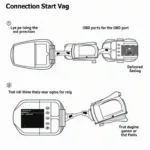Are you looking for a new used car and have heard about the tempting prices of reimports? It’s true that you can save a lot of money when buying a reimported vehicle. But be careful: In addition to the advantages, there are also some disadvantages that you should definitely be aware of before making a purchase decision.
Reimport – What does it actually mean?
A reimport is a vehicle that was originally intended for sale in another country, but was reintroduced to Germany. These are often EU new cars that are sold cheaper abroad due to price differences or other market conditions.
Disadvantages of Reimports: Not all that glitters is gold
1. Warranty and Guarantee:
“When buying a reimport, it is important to carefully check the warranty conditions,” advises master mechanic Thomas Berger from Munich. “The manufacturer’s warranty can vary depending on the country and may only be valid to a limited extent in Germany.” In the worst case, you may have to bear the repair costs yourself in the event of a defect.
2. Equipment Differences:
Cars that are produced for other markets often differ in their equipment from German models. For example, air conditioning, navigation systems, or seat heating may not be standard or may be available in a different version. “Therefore, pay close attention to the equipment list and compare it with a comparable German model,” recommends Berger.
 Reimport car feature differences compared to domestic models
Reimport car feature differences compared to domestic models
3. Service and Maintenance:
Reimports can also lead to challenges when it comes to maintenance and repairs. Not all workshops are familiar with the special features of vehicles from other countries. “Ideally, find a workshop that has experience with reimports and has the necessary diagnostic equipment,” says Berger.
4. Resale:
Reimports are often more difficult to sell on the used car market than comparable German models. Potential buyers are often wary of the uncertainties regarding warranty and service.
5. Language and Documentation:
For reimports from non-EU countries, the operating instructions and on-board computer may be in a different language. This can lead to communication problems in everyday use. Make sure that all important documents are available in German.
Conclusion: Reimport – yes or no?
The decision for or against a reimport is ultimately a question of personal budget and risk appetite. Those who are willing to deal intensively with the topic and accept the possible disadvantages can save real money when buying a reimport.
Do you have any further questions about reimports or need support in finding a suitable vehicle? Please feel free to contact us – our vehicle technology experts are here to help you with advice and assistance!

